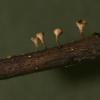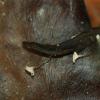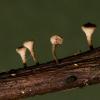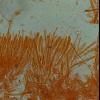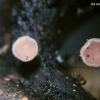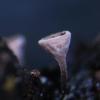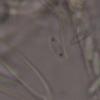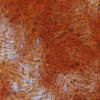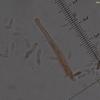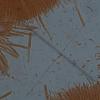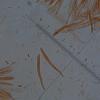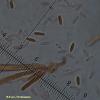
16-11-2025 21:09
 Robin Isaksson
Robin Isaksson
Anyone recognize this acc. to pictures.? Found on

18-11-2025 13:59
Nogueira HéctorNovember 14, 2025 Brazuelo (León) SPAIN Hymenosc

17-11-2025 19:14
herman lambertApothécie discoïde 0.6 cm diam., orangeFace hym�

17-11-2025 21:57
Philippe PELLICIERBonjour,Récolté sur bois de feuillu mort dur, no

17-11-2025 21:46
Philippe PELLICIERBonjour,Récolté sur bois pourrissant de feuillu

14-11-2025 16:26
 Marian Jagers
Marian Jagers
Hello everyone, On dead wood of Cytisus scoparius

15-11-2025 23:22
Mario FilippaHello,this is what I think to be Hymenoscyphus mac

15-11-2025 20:25
 Riet van Oosten
Riet van Oosten
Hello, Found by Laurens van der Linde, Nov. 2025
 I was digging through decaying litter of Ceratonia siliqua to find small greyish-beige ascocarps attached to stick, leaves and what looks like the base of a legume. Specimen collected and examined microscopically. They are about 4-5 mm long and diameter anout 1.2 mm.
I was digging through decaying litter of Ceratonia siliqua to find small greyish-beige ascocarps attached to stick, leaves and what looks like the base of a legume. Specimen collected and examined microscopically. They are about 4-5 mm long and diameter anout 1.2 mm. Asci 55x65 um long, weakly IKI +ve, opening sometimes with a consticted rim (like a vase) but not sure about this (see images). Base tapering and sinusoidal (croziers?)
Paraphyses 65-85 um long, with slightly swollen and bent apices, numerous.
Spores narrowly ellipsoid 7-8 x 1.5-2.0 um some taking the stain and have two oil bodies at the poles.
Medullary excipulum subglobular hyphae 12-18um diameter.
I was thiking this is Ciboria, perhaps americana, although this species is reported on decaying fruit and seeds rather on twigs and leaves. Thanks in advance for your suggestions.

It's a Moellerodiscus... Do you remember this discusión? http://www.ascofrance.fr/forum/34675/ciboria-on-ceratonia-leaves
Well, now I think you have found the one without croziers... This species is probably Ciboria aestivalis, but this still has to be prooved studying the type and then transfer it (or not!) into Moellerodiscus... It is present in many different substrates...
Best regards,
Raúl

Thanks for your reply. I feel a bit 'embarassed' for not comparing it well with Moellerodiscus at first place, but my previous collections of Moellorodiscus lenta had an ochre colour (not grey as this) shorter stipes and fruiting in from mid-November (this was relatively early and yes, summerish) that I mistook it as a different Ciboria. Regards the croziers you are right, the base is slightly curved or wavy but no typical croziers. Overall it looked a >bit< different from M. lentus, but then the spores, excipulum, paraphyses, etc. match.
With regards the taxonomy, I assume that it is still referred to as C. aestivalis until further studies. I have dried specimens of this collection which I can send you some, but not many 8 or so. Maybe I dry it and send you few more collection since this complex is quite common under Ceratonia leaf litter.

